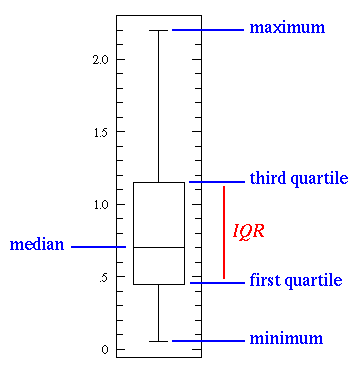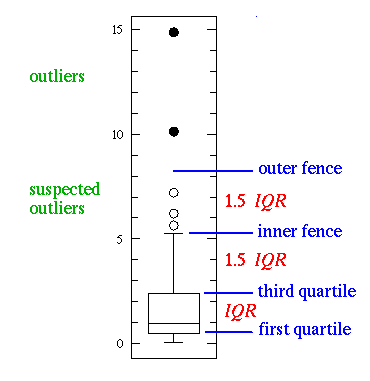What inferences about probability can I glean from a box and whisker plot?
1 Answer
A box and whisker plot should tell you the median value of your dataset, the maximum and minimum values, the range in which
Explanation:
More technically, you can regard a box and whisker plot in terms of quartiles.
The top whisker is the maximum value, the bottom whisker the minimum value (assuming neither of the values are outliers (see below)).
Information on probabilities is gleaned from the positions of quartiles.
The top of the box is
Somewhere inside the box will be
The bottom of the box is
If a value falls above
For examples, see

and

These images are from this descriptive, useful page that you should read for further explanation and more examples.
These Wikipedia pages on quartiles, interquartile range and box and whisker plots should be useful also
Quartiles
Interquartile range
Box and whisker plots

